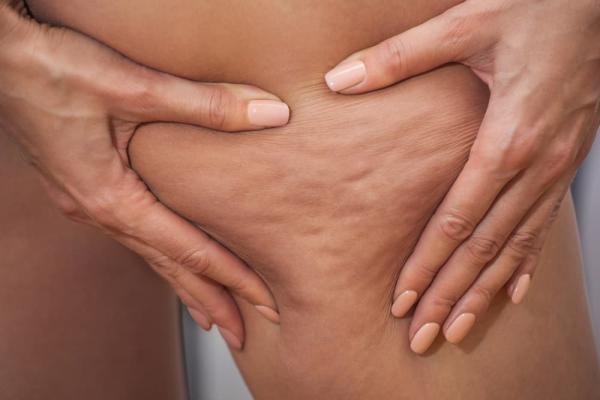
If you have cellulite, or cottage cheese skin as many call it, you're not alone; the majority of women have it. And to throw a disclaimer out right at the beginning, you should know there is nothing dangerous, or wrong, about cellulite. Society - not any scientific research - has created the dialogue that cellulite is undesirable. If you have it and it doesn't bother you, fantastic.
But, if you dread when spring (and swimsuit season) comes because of your cellulite thighs, it's helpful to know what it is and what you can do about it.
All body types can get it
Cellulite is common. Very common, and it doesn't really discriminate by weight. Yes, gaining weight can make cellulite look more noticeable, but thin people are also plagued by it.
"I even treat Victoria's Secret models," Shira Ein-Dor, owner of the American Cellulite Reduction Center told Health.com. "They're very lean, they work out and eat well, they do everything right but they still have cellulite."
There is still a lot we don't know about cellulite. But so far this is what scientists have figured out.
What affects cellulite?
Hormones
Cellulite usually gets worse (or appears) as you mature. Any change to your hormones can affect it, so sometimes it appears during puberty, while pregnant or just as you get older.
Genetics
Hate to break it to you, but some people are more prone to getting cellulite than others.
Diet
What you eat isn't wholly responsible for your cellulite, but it can definitely increase or decrease it. We'll talk about what you should and shouldn't eat below.
Activity level
It's a myth that only people who are out-of-shape get cellulite, but exercise and toning can making it less visible.
Tight clothing
Tight clothing around your thighs can limit your blood flow, which scientists have discovered affects cellulite.
Being a woman
Cellulite is totally sexist. Only 10 percent of men but 90 percent of women have it, according to Scientific American.
So what can be done? No miracle product or procedure has completely eradicated cellulite, but the following have been shown to help it out.
What works:
Eating the right food
Too much fat, salt and carbohydrates can enhance your cellulite. Foods like fruits, vegetables and other foods high in fiber can help reduce it.
In case you don't know what foods have the most fiber, here are 15 delicious foods to get started: split peas, lentils, black beans, lima beans, artichokes, peas, broccoli, brussels sprouts, raspberries, blackberries, avocados, pears and bran flakes, whole wheat pasta and oatmeal.
Getting plenty of cardio
Cardio helps keep your fat under control, and excess fat can make your cellulite worse. Besides that, cardio has a whole world of amazing benefits. There really is no replacement for it.
Loosening (but tightening) up with yoga
Running and biking isn't enough. You have to strength train to tighten your skin. Stretching and strengthening the areas where cellulite occurs can help, according to David McDaniel, the director of the Institute for Anti-Aging and the assistant professor of clinical dermatology at Eastern Virginia Medical School. "Firming and toning those muscles will in turn tighten the skin, giving the illusion that cellulite is less noticeable," McDaniel told health.com.
There are lots of other ways to strength train, but yoga also cuts down on stress which can cause you, among other thing, to eat those foods you're trying to avoid.
Change your underwear
If your underwear is tight, it's time to change that.
"Cellulite is always underneath where the elastics go, and if you draw an invisible line where the cellulite is, you will see where the panty lines are," osteopathic physician Lionel Bissoon told Scientific American. "I tell people the most important preventive thing you can do, if you can't afford treatment, is change your [style of] underwear."
What does not work:
Creams
Most creams just address the fat aspect of cellulite and any results that may come are only temporary. According to Mayo Clinic, no studies have shown these creams alone improved the cellulite.
Liposuction
Liposuction can remove the fat, but it won't get rid of cellulite, and in some cases could make it worse, according to the Mayo Clinic.
You should love and accept your body through all phases of life, but by doing the healthy things listed above, you can gain confidence just by knowing you're taking care of yourself.

